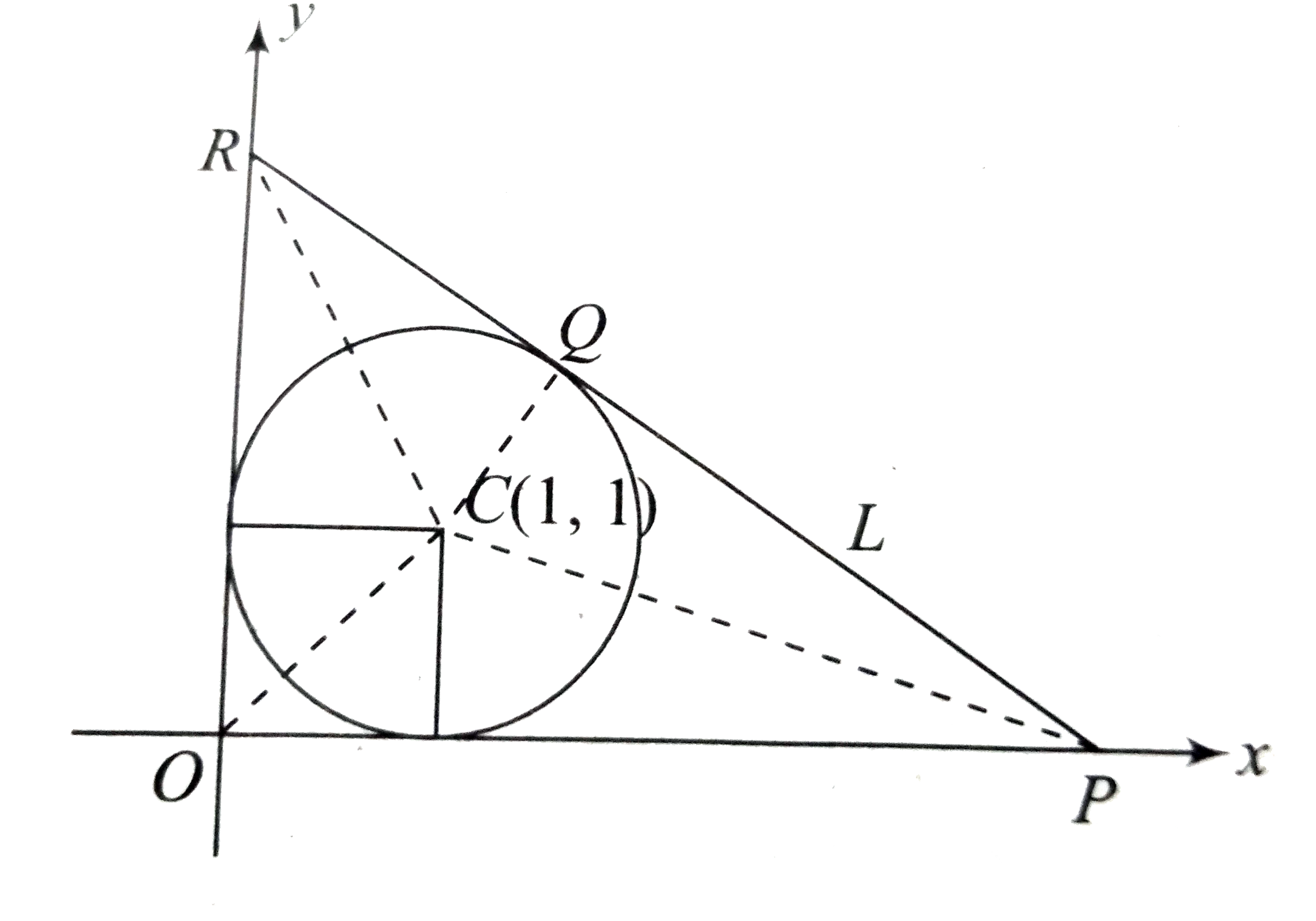The complex number sin(x)+icos(2x) and cos(x)−isin(2x) are conjugate to each other for
x=nπ,n∈Z
x=0
x=(n+1/2)π,n∈Z
no value of x
The correct Answer is:D
To determine the values of x for which the complex numbers sin(x)+icos(2x) and cos(x)−isin(2x) are conjugates of each other, we need to set up the equality between the two expressions and analyze their real and imaginary parts.
Step 1: Set the two complex numbers equal to each other.
We have:
sin(x)+icos(2x)=cos(x)−isin(2x)
Step 2: Separate the real and imaginary parts.
From the above equation, we can equate the real parts and the imaginary parts:
- Real part:
sin(x)=cos(x)
- Imaginary part:
cos(2x)=−sin(2x)
Step 3: Solve the real part equation.
From the equation sin(x)=cos(x), we can divide both sides by cos(x) (assuming cos(x)≠0):
tan(x)=1
This implies:
x=π4+nπ(n∈Z)
Step 4: Solve the imaginary part equation.
From the equation cos(2x)=−sin(2x), we can rewrite it as:
cos(2x)+sin(2x)=0
Dividing by cos(2x) (assuming cos(2x)≠0):
1+tan(2x)=0⟹tan(2x)=−1
This implies:
2x=3π4+nπ(n∈Z)
Thus:
x=3π8+nπ2(n∈Z)
Step 5: Find common solutions.
We need to find values of x that satisfy both:
1. x=π4+nπ
2. x=3π8+nπ2
To find common solutions, we can equate:
π4+nπ=3π8+mπ2
Multiply through by 8 to eliminate the fractions:
2π+8nπ=3π+4mπ
Rearranging gives:
8nπ−4mπ=π⟹8n−4m=1
This equation does not yield integer solutions for n and m, indicating that there are no common solutions.
Conclusion:
The complex numbers sin(x)+icos(2x) and cos(x)−isin(2x) are conjugates for no values of x.
---
We have:
sin(x)+icos(2x)=cos(x)−isin(2x)
From the above equation, we can equate the real parts and the imaginary parts:
- Real part:
sin(x)=cos(x)
- Imaginary part:
cos(2x)=−sin(2x)
From the equation sin(x)=cos(x), we can divide both sides by cos(x) (assuming cos(x)≠0):
tan(x)=1
This implies:
x=π4+nπ(n∈Z)
From the equation cos(2x)=−sin(2x), we can rewrite it as:
cos(2x)+sin(2x)=0
Dividing by cos(2x) (assuming cos(2x)≠0):
1+tan(2x)=0⟹tan(2x)=−1
This implies:
2x=3π4+nπ(n∈Z)
Thus:
x=3π8+nπ2(n∈Z)
We need to find values of x that satisfy both:
1. x=π4+nπ
2. x=3π8+nπ2
π4+nπ=3π8+mπ2
Multiply through by 8 to eliminate the fractions:
2π+8nπ=3π+4mπ
Rearranging gives:
8nπ−4mπ=π⟹8n−4m=1
This equation does not yield integer solutions for n and m, indicating that there are no common solutions.
The complex numbers sin(x)+icos(2x) and cos(x)−isin(2x) are conjugates for no values of x.
Topper's Solved these Questions
- COMPLEX NUMBERSBook:CENGAGE ENGLISHChapter:COMPLEX NUMBERSExercise:MULTIPLE CORRECT ANSWERS TYPE
Explore 49 Videos
- COMPLEX NUMBERSBook:CENGAGE ENGLISHChapter:COMPLEX NUMBERSExercise:LINKED COMPREHENSION TYPE
Explore 36 Videos
- COMPLEX NUMBERSBook:CENGAGE ENGLISHChapter:COMPLEX NUMBERSExercise:EXERCISE3.11
Explore 6 Videos
- CIRCLESBook:CENGAGE ENGLISHChapter:CIRCLESExercise:Comprehension Type
Explore 8 Videos
- CONIC SECTIONSBook:CENGAGE ENGLISHChapter:CONIC SECTIONSExercise:All Questions
Explore 101 Videos
Similar Questions
If z=ω,ω2whereω is a non-real complex cube root of unity, are two vertices of an equilateral triangle in the Argand plane, then the third vertex may be represented by z=1 b. z=0 c. z=−2 d. z=−1
View SolutionConsider the complex number z=1−isinθ1+icosθ.
The value of θ for which z is purely real are
View SolutionIf α is complex fifth root of unity and (1+α+α2+α3)2005=p+qα+rα2+sα3 (where p,q,r,s are real), then find the value of p+q+r+s.
View Solution
In the diagram as shown, a circle is drawn with centre C(1,1) and radius 1 and a line L. The line L is tangent to the circle at Q. Further L meets the y-axis at R and the x-axis at P in such a way that the angle OPQ equals θ where 0<θ<π2.
Area of triangle OPR when θ=π/4 is
View SolutionGiven that A(1,1) and B(2,−3) are two points and D is a point on AB produced such that AD=3AB. Find the coordinates of D.
View SolutionIf the complex numbers sin x+i cos2x and cos x-i sin2x are conjugate to each other then the set of values of x=
View SolutionThe number of real values of x such that sin x+iota cos2x&cos x-iota sin2x are conjugate to each other?
View SolutionThe complex number sin x+i cos2x and cos-i sin2x are conjugate to each other when
View SolutionModulus of (cos theta-isin theta)/(sin theta-icos theta) is
View SolutionIf f(x)=∣∣ ∣ ∣∣cos(2x)cos(2x)sin(2x)−cosxcosx−sinxsinxsinxcosx∣∣ ∣ ∣∣, then
View Solutionयदि सम्मिश्र संख्याएँ sinx+i cos2x और cosx−isin2x एक-दूसरे की संयुग्मी हैं, तो
View SolutionExpress the complex number in the form r(cosθ+isinθ)
(ii)1−sinα+icosα
View SolutionIf the complex numbers sinx+icos2x and cosx−isin2x are conjugate of each other, then the number of values of x in the inverval [0,2π) is equal to (where, i2=−1)
View Solutionx के किस मान के लिए सम्मिश्र संख्याएँ sinx+icos2x और cosx−i एक - दूसरे की संयुग्मी (conjugate) होंगी ?
View Solutionयदि सम्मिश्र संख्याएँ sin x+ icos 2x और cos x-isin 2x की सयुग्मी है तो
View Solution(cosθ+isinθ)4(sinθ+icosθ)5=?
View Solution
